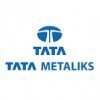
i
Rashmi Metaliks
Filter interviews by
Rashmi Metaliks Electrical Project Engineer Interview Questions and Answers
Rashmi Metaliks Electrical Project Engineer Interview Experiences
1 interview found
(2 Questions)
- Q1. Transformers question
- Q2. Stater question
Top trending discussions






Interview questions from similar companies

Electrical Technician Interview Questions & Answers
SHYAM METALICS AND ENERGYposted on 15 Jan 2025
I applied via AmbitionBox and was interviewed in Dec 2024. There were 5 interview rounds.
(2 Questions)
- Q1. What is the working principle of an overload relay?
- Q2. How is insulation resistance measured?
(2 Questions)
- Q1. How to face Electrical safety
- Q2. What is the process for performing preventive maintenance on a motor?
(2 Questions)
- Q1. What strategies can you use to succeed in an interview?
- Q2. What is the working principle of a star-delta starter?
(2 Questions)
- Q1. What are undervoltage faults?
- Q2. What are overvoltage faults?
(2 Questions)
- Q1. What is the purpose of a thermal relay?
- Q2. What is an RDOL starter?
Interview Preparation Tips

Electrical Engineer Interview Questions & Answers
Jindal Industries Private Limitedposted on 28 Aug 2024
I was interviewed in Jul 2024.
(3 Questions)
- Q1. What is alternater
- Q2. What is transformer
- Ans.
Transformer is a static device is change is ac voltage one level and another level but no change in frequency the work in mutual induction method.
- Q3. What is rotor types syuchronus machine
- Ans.
Sailent type rotor and cylinder type rotor of uses in syuchronus machine.
(2 Questions)
- Q1. What is synonyms machine
- Q2. What is induction Machine
Interview Preparation Tips

Junior Engineer Electrical Interview Questions & Answers
Amalgam Steelposted on 7 Aug 2024
I applied via Naukri.com and was interviewed in Feb 2024. There were 2 interview rounds.
(5 Questions)
- Q1. Knowledge about HT & LT panels
- Q2. Knowledge about HT motors like ball mill motors
- Q3. You have must knowledge about abb umc100
- Q4. Knowledge about transformers.
- Q5. Knowledge about conveyor zss,BSS,pcs.
(2 Questions)
- Q1. Family background & privious company details
- Q2. Salary discussion

I applied via Naukri.com and was interviewed in Mar 2024. There were 3 interview rounds.
(3 Questions)
- Q1. What is Transformers, Motor, Genretor, Electric genetion
- Ans.
Transformers, motors, generators, and electric generation are essential components in electrical systems.
Transformers are devices that transfer electrical energy between two or more circuits through electromagnetic induction.
Motors convert electrical energy into mechanical energy to drive machinery.
Generators convert mechanical energy into electrical energy.
Electric generation involves the process of producing electric...
- Q2. KVL,KCL,Thevenin Theorem,Nodal analysis
- Q3. Can you explain what a DC motors
- Ans.
DC motors are electric motors that operate using direct current (DC) power sources.
DC motors convert electrical energy into mechanical energy through the interaction of magnetic fields.
They are commonly used in appliances, power tools, and electric vehicles.
DC motors have two main types: brushed DC motors and brushless DC motors.
Brushed DC motors use brushes to conduct current, while brushless DC motors use electronic ...
Number System, coding and decoding, Analogies
(2 Questions)
- Q1. What is Nodal analysis
- Ans.
Nodal analysis is a method used in electrical engineering to determine the voltage at each node in a circuit.
Nodal analysis involves writing Kirchhoff's Current Law equations for each node in a circuit.
It is used to analyze complex circuits with multiple nodes and voltage sources.
The goal of nodal analysis is to determine the voltage at each node relative to a reference point, usually ground.
It is a powerful tool for s...
- Q2. Explain the Transformer
- Ans.
A transformer is an electrical device that transfers electrical energy between two or more circuits through electromagnetic induction.
Consists of two coils of wire, known as primary and secondary coils
Primary coil receives electrical energy and creates a magnetic field
Magnetic field induces a voltage in the secondary coil, transferring energy
Used to step up or step down voltage levels in power distribution systems
Commo...
Skills evaluated in this interview

I was interviewed in Jan 2024.
(2 Questions)
- Q1. Power factor What is vfd Difference between ac and dc motor
- Ans.
Power factor is the ratio of real power to apparent power in an AC circuit. VFD stands for Variable Frequency Drive. AC motors run on alternating current while DC motors run on direct current.
Power factor is a measure of how effectively electrical power is being used in a circuit.
It is calculated by dividing the real power (in watts) by the apparent power (in volt-amperes).
A power factor of 1 indicates that all the pow...
- Q2. Types of load cell
- Ans.
Types of load cells include strain gauge load cells, hydraulic load cells, and capacitive load cells.
Strain gauge load cells measure the strain or deformation of a material.
Hydraulic load cells use hydraulic fluid to measure force.
Capacitive load cells measure changes in capacitance to determine force.
Other types of load cells include piezoelectric load cells and pneumatic load cells.

Electrical Maintenance Engineer Interview Questions & Answers
Welspun Corpposted on 16 Dec 2023
I applied via Walk-in and was interviewed before Dec 2022. There were 3 interview rounds.

(4 Questions)
- Q1. Like vfd and basic plc and scada and HT and LT breaker
- Q2. Vfd and HT and LT breaker and motor maintenance
- Q3. LT and HT and breaker
- Q4. Vfd and brive nad transfermer
(1 Question)
- Q1. Basic plc and scada with input and output device

Electrical Maintenance Engineer Interview Questions & Answers
Sunflag Iron and Steelposted on 9 Nov 2021
I applied via Walk-in and was interviewed in Oct 2021. There was 1 interview round.
Interview Questionnaire
9 Questions
- Q1. What is power transmission line
- Ans.
Power transmission line is a system of structures, wires, and insulators that transmit electrical energy from a power plant to a substation.
Power transmission lines are used to transmit high voltage electricity over long distances.
They are made up of towers or poles that support the wires and insulators.
The wires are usually made of aluminum or copper and are insulated to prevent electrical leakage.
Power transmission l...
- Q2. What is power plant
- Ans.
A power plant is a facility that generates electricity by converting various forms of energy into electrical energy.
Power plants can use various sources of energy such as coal, natural gas, nuclear, hydro, wind, and solar power.
The energy is converted into electrical energy through generators.
Power plants are essential for providing electricity to homes, businesses, and industries.
They can be classified into thermal, h...
- Q3. What is current
- Ans.
Current is the flow of electric charge through a conductor.
Current is measured in amperes (A)
It is the rate of flow of electric charge
Current flows from high potential to low potential
It is the product of voltage and resistance (Ohm's law)
- Q4. What is voltage
- Ans.
Voltage is the measure of electric potential difference between two points in a circuit.
Voltage is measured in volts (V)
It is the force that drives electric current through a circuit
Higher voltage means more energy is available to move electrons
Voltage can be either AC (alternating current) or DC (direct current)
Examples of voltage sources include batteries, generators, and power supplies
- Q5. What is ampere
- Ans.
Ampere is the unit of electric current in the International System of Units (SI).
Ampere is named after the French physicist Andre-Marie Ampere.
It is defined as the amount of electric charge that flows through a conductor in one second when there is a constant potential difference of one volt across the conductor.
It is represented by the symbol 'A'.
Ampere is used to measure the flow of electric current in a circuit.
It i...
- Q6. What is ac current
- Ans.
AC current is a type of electrical current that periodically reverses direction.
AC stands for alternating current
It is commonly used in household electrical systems
AC current changes direction 50-60 times per second
It is generated by power stations and distributed through power lines
AC current is measured in units of hertz (Hz)
- Q7. What is dc current
- Ans.
DC current is the flow of electric charge in a constant direction.
DC stands for Direct Current
It is produced by sources such as batteries, generators, and solar cells
DC current flows in a single direction
It is used in electronic devices such as computers, televisions, and radios
- Q8. What is alternative current
- Ans.
Alternating current (AC) is an electrical current that periodically reverses direction.
AC is used to transmit power over long distances
It is generated by power stations and used in homes and businesses
AC voltage can be easily changed using transformers
AC is measured in cycles per second, or Hertz (Hz)
- Q9. What is 11kv current
- Ans.
11kV current is the electrical current that flows through a circuit with a voltage of 11,000 volts.
11kV current is typically used in high voltage power transmission and distribution systems.
It is important to handle 11kV current with caution as it can be dangerous and potentially lethal.
The amount of current that flows through an 11kV circuit depends on the resistance of the circuit and the voltage applied.
In order to ...
Interview Preparation Tips

Electrical Engineer Interview Questions & Answers
Jayaswal Neco Industriesposted on 30 Dec 2021
I applied via Shine and was interviewed in Dec 2021. There was 1 interview round.
Interview Questionnaire
1 Question
- Q1. What is transformer
- Ans.
A transformer is an electrical device that transfers electrical energy between two or more circuits through electromagnetic induction.
Transformers are used to increase or decrease the voltage of an alternating current (AC) signal.
They consist of two or more coils of wire, known as windings, that are wound around a core made of magnetic material.
The primary winding receives electrical energy from a power source, while t...
Interview Preparation Tips

I applied via Walk-in and was interviewed before Feb 2020. There were 6 interview rounds.
Interview Questionnaire
2 Questions
- Q1. What are the safety PPE used in plant?
- Ans.
Safety PPE used in plants include hard hats, safety glasses, gloves, and steel-toed boots.
Hard hats protect the head from falling objects and electrical hazards.
Safety glasses protect the eyes from flying debris and chemicals.
Gloves protect the hands from cuts, burns, and chemical exposure.
Steel-toed boots protect the feet from heavy objects and electrical hazards.
Other PPE may include respirators, hearing protection, ...
- Q2. How to configure a PLC
- Ans.
PLC configuration involves setting up input/output modules, programming the logic, and configuring communication protocols.
Identify the input/output modules required for the application
Program the logic using ladder logic or other programming languages
Configure communication protocols such as Modbus or Ethernet/IP
Test and debug the PLC program
Document the configuration for future reference
Interview Preparation Tips
Skills evaluated in this interview
Rashmi Metaliks Interview FAQs
Tell us how to improve this page.
Rashmi Metaliks Interviews By Designations
- Rashmi Metaliks Assistant Manager Interview Questions
- Rashmi Metaliks Electrical Engineer Interview Questions
- Rashmi Metaliks Graduate Engineer Trainee (Get) Interview Questions
- Rashmi Metaliks Assistant Engineer Interview Questions
- Rashmi Metaliks Deputy Manager Interview Questions
- Rashmi Metaliks Electrical GET Interview Questions
- Rashmi Metaliks Logistics Executive Interview Questions
- Rashmi Metaliks Senior Engineer Interview Questions
- Show more
Interview Questions for Popular Designations
- Senior Electrical Engineer Interview Questions
- Electrical Site Engineer Interview Questions
- Electrical Engineer Interview Questions
- Electrical & Instrumentation Engineer Interview Questions
- Electrical Technician Interview Questions
- Electrical Supervisor Interview Questions
- Electrical Maintenance Engineer Interview Questions
- Electrical GET Interview Questions
- Show more
Rashmi Metaliks Electrical Project Engineer Interview Process
based on 1 interview
Interview experience
Interview Questions from Similar Companies
Fast track your campus placements
Rashmi Metaliks Electrical Project Engineer Reviews and Ratings
based on 1 review
Rating in categories
|
Assistant Engineer
231
salaries
| ₹1.5 L/yr - ₹4.9 L/yr |
|
Assistant Manager
147
salaries
| ₹4 L/yr - ₹11 L/yr |
|
Engineer
136
salaries
| ₹2 L/yr - ₹6.1 L/yr |
|
Senior Engineer
136
salaries
| ₹3 L/yr - ₹8 L/yr |
|
Junior Engineer
132
salaries
| ₹1.4 L/yr - ₹4.5 L/yr |

Tata Steel

JSW Steel

Steel Authority Of India

Jindal Steel and Power
- Home >
- Interviews >
- Rashmi Metaliks Interview Questions >
- Rashmi Metaliks Electrical Project Engineer Interview Questions













